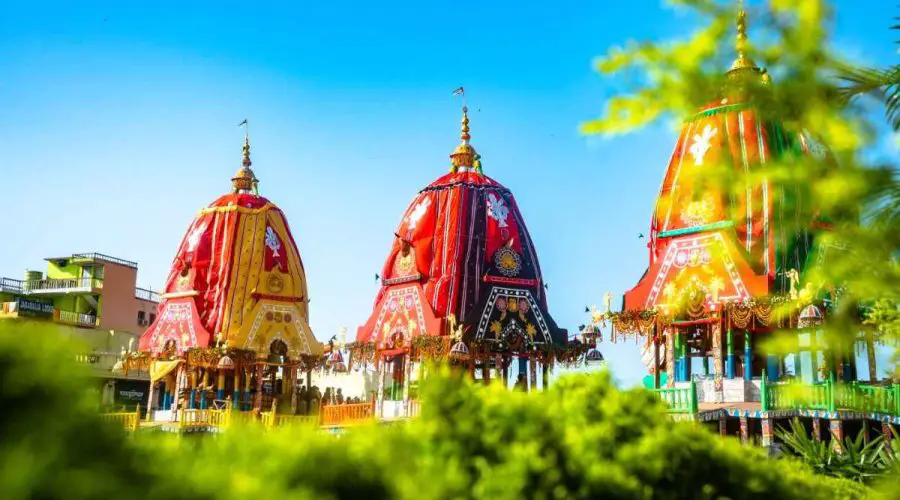Ulto Rath 2023 Date | All You need to know about Ulta Rath Yatra 2023
Article Rating
☆☆☆☆☆ 4.2/5
Ulta Rath, also known as Bahuda Yatra or Ulto Rath, is the return journey of the Puri Jagannath Rath Yatra chariots from the Gundicha Temple after eight days. This marks the end of the Jagannath Rath Yatra.
For the year 2023, the date for Ulto Rath is June 28.
On the seventh day of Ashada month, preparations for the return journey begin. After the morning puja at Gundicha Temple, three garlands are presented to the three gods, and the three chariots stationed at Saradha Bali are sanctified.
The chariots are turned around to face south on the return voyage in the Dakshina Moda ceremony.
This turning around is a highly technical process that involves the use of special gears and specialised instruction from the chariot’s creators. Before they can be positioned in the appropriate manner, all of the chariots are dragged half a mile.
The chariots for the return journey are placed near the Naka Chana Dwara.
The Subhadra (Devadalana) chariot is in the middle, followed by the chariot of Balabhadra (Taladhwaja) in the west, and lastly the chariot of Jagannath (Nandighosa) in the east. In the middle is Subhadra, on the right is Jagannath, and on the left is Balabhadra.
Ratha Bhoga is a special dry food served at the conclusion of the Dakshina Moda ritual.
The day before the return date is very important. The chariot is decorated with chara malas and put within the sanctum sanctorum before the deities.
The return journey starts in the afternoon of Ashada Shukla Paksha Dasami tithi, or the tenth day of the waxing moon in Ashad month.
Rosa Homa, Surya Puja, Dwarapala Puja, and morning food offerings are significant pujas are performed before returning home.
After this the gods are prepared for the journey with fitting of wooden frame and Senapati Lagi. Servant bring chest drawers, cushions, and other stuff while the gods are being readied.
Dancers perform ancient dances as a sacrifice to the gods, creating a joyous mood. Acrobatics are carried out. Performers also dress up as Hanuman and other figures from epics and puranas.
The Naka Chana Dwara is where the deities emerge. They are fitted Taihas and other accessories. After then, the gods are seated in their own chariots.
The priests carry Madana Mohana, Rama, and Krishna’s murtis to Jagannath and Balabhadra’s chariots. The chariots’ pulling starts in the afternoon.
The King performs the Chhera Pahara ceremony, and in his absence, Mudirasta, a young Brahmin boy, does it.
The chariots of Lord Jagannath, Balabhadra, and Subhadra halt at the Mausima Temple during the Ulto Rath yatra.
Three deities are served ‘poda pitha,’ an unique delicacy consisting of rice, coconut, lentils, and jaggery, at the Mausima temple, which is dedicated to Lord Jagannath’s aunt.
After then, Jagannath’s chariot stops in front of Gajapati’s palace for the Lakshminarayana Bheta, or Lakshmi’s gathering.
The chariot is then drawn and arrives at its final destination.

